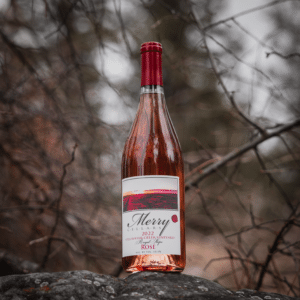A bottle of wine by any other name…
Like most good things in life, wine comes in all shapes and sizes. The grocery store stocks 5 liter boxed wines. The gas station sells 500 milliliter cartons. The mini golf course slings 12 ounce cans. And of course your local winery is happy to supply you with the standard 750 mill glass bottles.
The usual suspects
Boxed wine, or bag in box (BIB), is likely what comes to mind first when thinking of alternative wine packaging. This practical vessel was invented in South Australia in the mid ’60s. It is an inexpensive option relative to traditional glass. This tends to give BIBs a bad rap because people assume the difference in cost is due to poor quality wine. Really it’s because the packaging is so much cheaper to manufacture and transport than glass bottles. The inner bladder is made of polyethylene terepthalate (PET) (called a goon sack in Australia, slang for flagon) and the exterior casing is a rigid cardboard shell. It’s true that you wouldn’t cellar age any BIB product. These wines aren’t meant for that: they should be consumed right away. They don’t need to be finished immediately, however, as the self-draining goon sack delivers via an external tap. This prevents oxygenation and ensures the wine stays good for a long time.
Wine in cans is another common option for lightweight packaging. Typically with a volume of 295 or 355 milliliters (10 or 12 fluid ounces), this non-resealable unit is great for camping, hiking, the pool, the beach—anywhere you wouldn’t want glass around. It’s a standalone product, meaning no accouterments such as corkscrew or glass are needed. This is an excellent method for packaging sparkling wines, and a Pét Nat can even go through secondary fermentation in can!
Cartons are alike in intention to cans in that they’re lightweight and standalone and great for on-the-go. They’re of slightly larger volume, typically 500 mL, and have a shallow plastic pour spout with a lid for easy resealing, ensuring freshness and convenience. The carton’s design features a paper product lined with a polymer to prevent leakage, and a very fine layer of aluminum (eight times thinner than a human hair) to prevent oxidation and light infiltration.
Game changers
Non-glass bottles are less common than the above styles but rather more futuristic looking. They are made of lightweight materials like cardboard (similar to cartons), aluminum (similar to cans), or PET (similar to the lining of a BIB). These feature a more typical bottle shape and standard 750 milliliter volume.
Kegged wine is gaining popularity throughout the industry as more restaurants and hotels (and even some individual consumers!) adopt this method. There is zero waste of either packaging or wine, as empty kegs are returned to the winery to be cleaned, sanitized, and refilled; and no wine is left for days in a partial container to oxidize and go ‘off’. It’s economical in both space and cost—one keg holds 19.5 liters (26 bottles worth) in a single container. Because the labor and materials costs are so much less for kegs, those 26 bottles would be priced much higher were they in standard packaging. The internal chamber of the keg is stainless steel, so the wine doesn’t age or deteriorate over time in the lightless, inert environment. The wine is displaced from the keg with nitrogen gas which doesn’t react with or change the flavor of the wine. At most there might be a little effervescence in the glass which quickly dissipates. We’ve found tremendous success with our keg program at Merry Cellars—about 40 percent of our wine ends up in keg!
Ol’ Reliable
The packaging all of us are most used to is of course the glass bottle, in use since the 1600s. Glass is the best material in which to age wine over time so it is the right choice for wines that need more cellaring. Investment wines will always be in glass. The traditional bottle is considered to be on the higher end of luxury than any of the aforementioned styles. Glass bottles as packaging are the most labor-intensive to manufacture, the most energy-expensive to transport, the most fragile and easily destroyed, and the most challenging to label or customize. They are also the most beautiful and elegant when on display, and the most emotionally tied to the experience of wine.
Large format glass bottles such as double magnum (3 liters), Jeroboam (4.5 L), or Balthazar (12 L) are a bit of a novelty. They are far and away the most expensive packaging on this list. The bottles are heavy when empty, let alone full of wine, and need to be handled with extreme care, which makes freight frightfully expensive. They’re not widely used, so economies of scale don’t apply. Special bottling equipment must be used and labels and closures are specially designed. All that being said, there is actually a difference in the wine aged in large format. There is less surface area of exposed wine compared to the total volume in a bigger bottle so the aging process is slowed way down and, if the wine is given long enough to rest, can result in a smoother, deeper wine than one aged in a standard size bottle.
Make memories, no matter the method
Some of the best wine times I’ve ever had have been with nontraditional packaging. Toasting to a friend’s birthday with cans while mini golfing; sharing a Merry Cellars canteen at a freezing tailgate; sipping straight from a carton with my aunt in a hotel room because we didn’t have any glasses… All great memories that were made possible because of the container itself. Regardless what container you choose next time you’re looking to purchase, remember as with people so with wine: it’s what is on the inside that counts.
Cheers, friends!
—Maureen




